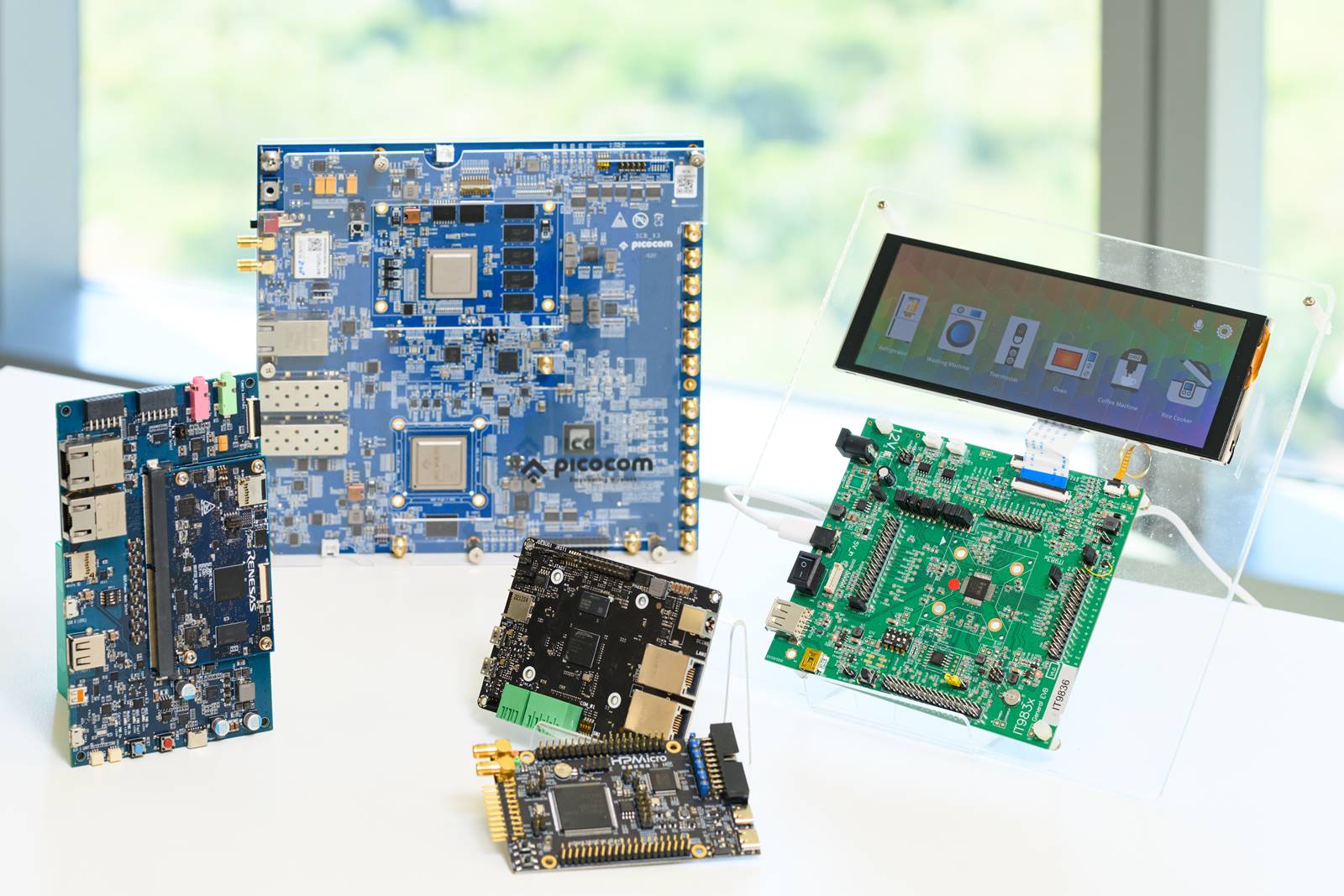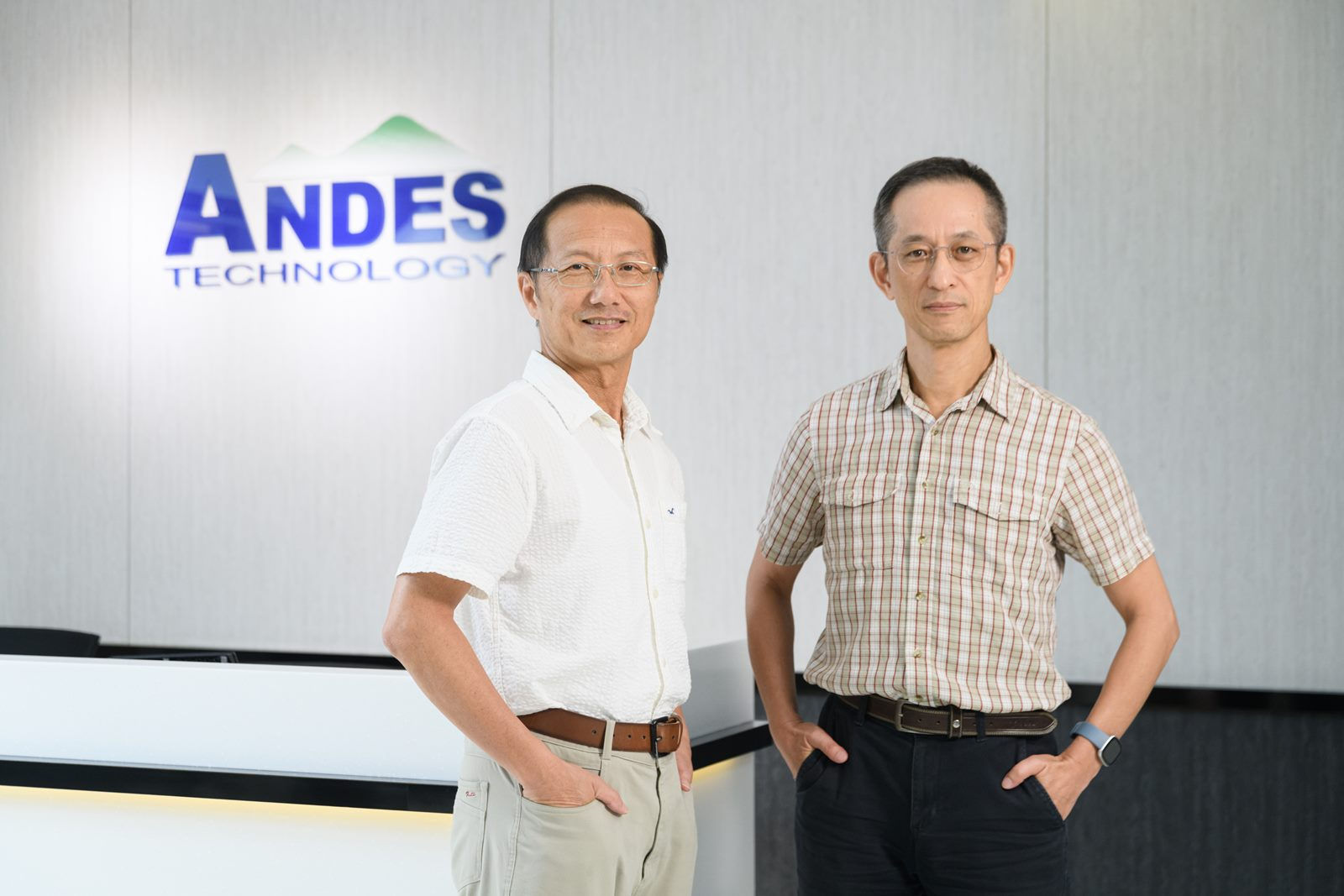How Taiwan’s Andes Technology makes Facebook’s AI chips

Source:Pei-Yin Hsieh
In June, tech giant Meta publicly stated for the first time in a technical report that its AI accelerator MTIA was jointly developed with Andes Technology Corporation from Taiwan. How did Andes, often dubbed “Taiwan’s ARM,” break into the data center accelerator market?
Views
How Taiwan’s Andes Technology makes Facebook’s AI chips
By Yixuan Linweb only
“Meta has been Andes Technology’s largest customer for at least three years,” reveals Frankwell Lin, chairman and CEO of Andes Technology Corporation, Asia’s leading provider of semiconductor intellectual property cores (IP). He confirmed this collaboration in an interview with CommonWealth Magazine.
The partnership between Andes and Meta on datacenter AI, which incorporates the RISC-V vector core, commenced in early 2019. However, the technical details were only made public in June of this year when Meta presented a paper on its in-house AI chip MTIA, which employs Andes Technology cores, at the International Symposium on Computer Architecture (ISCA) in Orlando, Florida. With the collaboration now in the public domain, Lin discloses that the major American customer mentioned in Andes Technology’s financial statement, accounting for approximately 15 percent of its revenue, is Meta.
The report, MTIA: First Generation Silicon Targeting Meta's Recommendation Systems, co-authored by Alexis Bjorlin, Vice President of Engineering/Infrastructure at Meta, specifies that each processing element incorporates two Andes Technology AX25-V100 processor cores for specialized AI operations. It further notes that these cores underwent significant customization to align with required functionalities.
Scheduled for deployment in 2025, the MTIA AI chip will shoulder major AI workloads in Meta data centers, including ad rankings and new recommendations.
Meta's Unique Approach: Meta raises its own cows for milk consumption.
“With our emerging software stack, we’ve achieved noteworthy strides, either matching or even surpassing GPU efficiency,” the report highlights. The chip reportedly boasts 0.9 times higher energy efficiency and twice the computing prowess across five distinct deep learning recommendation models.
Following the report’s release, Andes Technology emerged as a major contender in the AI race.
 (Source: Pei-Yin Hsieh)
(Source: Pei-Yin Hsieh)
Cloud Computing Companies Transition to In-House AI Chips
Meta isn’t the sole tech behemoth producing its own chips. Google and Amazon initiated in-house chip production early on to cater to the vast computational and memory demands of AI tasks, pivoting away from reliance on NVIDIA AI chips. This shift proved lucrative for both Taiwanese and American IC design firms. Alchip Technologies Limited, headquartered in Taipei and a key provider of application-specific integrated circuits (ASIC), secured a substantial order from Amazon. This agreement propelled Alchip’s stocks to astronomical levels, momentarily crowning the company as the most valuable entity on the Taiwan Stock Exchange. Similarly, Broadcom Inc., Google’s primary AI chip supplier, also witnessed a historic peak in its stock value this year.
However, Andes Technology’s involvement transcended mere supply. They co-developed the customized AX25/V100 cores with Meta. “Taking the standard AX25 model as a foundation, we tailored functionalities and specifications to meet Meta's unique demands,” Lin elucidates.
A mere two years ago, the IP cores that Andes Technology licensed were predominantly for applications like fingerprint recognition, edge computing, and various wireless communication technologies.
Currently, besides Meta, the company's ten largest clientele includes two AI startups craving high-performance computing. Furthermore, AI now constitutes 25 percent of the IP provider’s revenue.
 Frankwell Lin and Charlie Su, Chairman and CEO of Andes Technology. (Source: Pei-Yin Hsieh)
Frankwell Lin and Charlie Su, Chairman and CEO of Andes Technology. (Source: Pei-Yin Hsieh)
Vector Processing Capability: Key for Collaboration with Meta
Charlie Chan, the head of Greater China semiconductor research at Morgan Stanley, suggests that Meta’s interest in Andes Technology was primarily driven by their vector processing capability, an essential feature for parallel processing in AI tasks.
While Andes Technology adopts the open-source license RISC-V architecture, it boasts superior vector processing capabilities compared to its rivals.
However, why did Meta overlook the more renowned California-based IC design firm SiFive, co-founded by UC Berkeley computer science professor Krste Asanović, the principal architect behind RISC-V? An industry analyst clarifies, “At the time, SiFive lagged in vector processing capability development.”
In 2019, Andes Technology delved into vector processors. By December 2022, the firm unveiled its latest AndesCore 45-Series chip, globally pioneering with Linux multicore and 1024-bit vector processing capabilities. This processor is tailored specifically for applications managing vast data volumes, such as AI inference and training.
According to Charlie Su, President and CTO of Andes Technology, Meta’s interest wasn’t just confined to the vector processor. They were equally captivated by the Andes Custom Extension (ACE), an innovative automation tool.
The “heavy customization” cited in the technical report refers to the client’s utilization of ACE to embed critical commands or computations directly into the CPU. Without such a tool, options would have been limited either to introducing functionalities external to the CPU or manually requesting the architecture provider to incorporate additional commands.
“However, such commands and computations often relate to proprietary technical know-how, rendering this an undesirable route,” Su observes.
Meta Catalyzes Andes Technology’s AI Transition
“We might not be the most recognizable or the most affordable in the industry. However, Meta was profoundly satisfied with our proposition, primarily because their requirements were extensive and demanded a collaborator who was fully invested,” Su emphasizes.
He discloses that post-initiating their partnership with Meta, Andes Technology underwent restructuring two years ahead of its original schedule to cater to client demands.
Initially, they raised NT$3.5 billion via issuing GDR (global depositary receipts) on the Luxembourg Stock Exchange, a strategic move to amplify the R&D center.
In the ensuing two years, the company onboarded 250 new talents in Taiwan and North America, essentially doubling its workforce.
R&D Receives a Boost After Doubling Engineering Talent
“Such expansion is indispensable to effectively promote the relevant business segment,” Lin justifies the aggressive hiring approach.
Primarily due to the spike in R&D expenditure, the operational costs surged by 40.9 percent in the first half of 2023, relative to the corresponding period the previous year. Although consolidated revenue experienced a 15.1 percent YoY growth, amounting to NT$404 million during the first half of the year, the augmented R&D-centric operational expenses resulted in a net loss per share of NT$1.91.
“Investments and returns inherently follow a cyclical pattern,” Lin observes, arguing in favor of necessary investments to spur revenue growth.
Post-acquisition of the required expertise, Andes Technology pivoted to a fresh business paradigm.
 (Source: Pei-Yin Hsieh)
(Source: Pei-Yin Hsieh)
Historically, semiconductor IP providers predominantly banked on licensing fees, maintenance charges, and royalties accruing from their IP cores. However, contemporary tech giants are progressively collaborating with semiconductor IP vendors to refine their designs. In Meta's instance, the AI chip was conceived in-house, in tandem with Andes Technology, which accrued “customization fees” for its contribution.
The company’s burgeoning R&D talent pool ensures they can sustain this collaborative model.
“Currently, diverse AI forms are flourishing,” Lin remarks. “If the aim is to empower every visionary to realize their engineering aspirations, our RISC-V architecture is more apt than the ARM architecture,” he asserts, alluding to the competing technology from Cambridge-based semiconductor design powerhouse ARM.
Given that RISC-V is available under a royalty-free open-source license, it allows any individual or firm to modify it, thereby crafting an architecture that caters to specific needs, subsequently leading to microchip design and production. ARM, in stark contrast, prohibits such liberties.
Convinced of their flexibility, Lin anticipates that AI-centric revenue will constitute between 30 and 40 percent of the total revenue in the coming three years.
However, Big Tech's inclination toward in-house chips isn't the sole domain teeming with opportunities for Andes Technology.
As Chan underscored in his industry report, there's a marked shift toward localization of CPU design in China, accompanied by a broader trend leaning toward more streamlined architectures. Andes Technology is strategically poised in this context.
Given the unlikelihood of further technological transfers from x86 and ARM to China post the U.S. embargo on advanced microchip exports and cutting-edge semiconductor production technology to the country, Chinese corporations are increasingly gravitating toward the RISC-V architecture as a viable alternative.
A recent survey conducted by Morgan Stanley Securities (China) revealed that currently, a mere 9 percent of surveyed Chinese microcontroller (MPU) manufacturers employ RISC-V cores, compared to the 56 percent allegiance to ARM cores. Intriguingly, an average of 41 percent conveyed their intent to transition predominantly to RISC-V in the ensuing year. This intention was particularly pronounced among electric vehicle and consumer electronics manufacturers, with an overwhelming 80 and 86 percent, respectively, planning the shift.
Currently, the United States, China, and Taiwan contribute 33 percent, 25 percent, and 40 percent, respectively, to Andes Technology’s revenue stream. Lin highlights that their product suite encompasses cloud and edge computing, inclusive of advanced driver assistance systems, Artificial Intelligence of Things, FPGA implemented in data centers, and solid-state drives, spanning both mature and avant-garde processes.
He hints at forthcoming developments, revealing, “We are actively engaging with other potential clients on par with Meta’s stature.”
Have you read?
- OpenAI founder Sam Altman: Nuclear fusion could meet Taiwan’s clean energy needs
- AI medical records assistant Copilot
- Apps, musicians, language tutors: Taiwan’s AI visionaries
Translated by Susanne Ganz
Uploaded by Ian Huang






